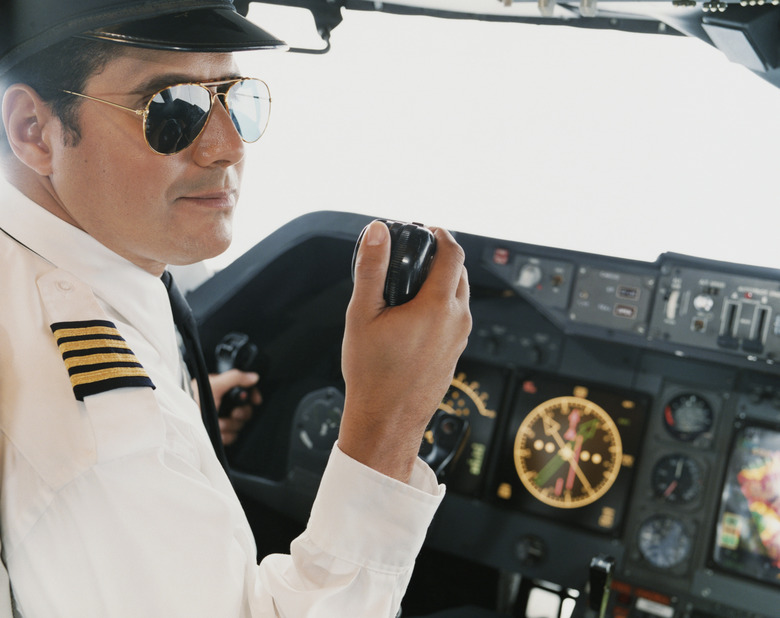How The Heading Of A Flight Path Is Calculated
Pilots navigating their aircraft need to to calculate the heading of the flight path. The flight path, or course, of a plane is the direction of flight relative to the ground. The heading is the direction that is necessary to counter wind velocity to stay on the desired flight path. Calculating the heading is a classic navigation problem that is solved by graphing or using mathematics. Of course, pilots use official online flight calculators that do the math for them, but whether the math is done by computer or by hand, the principles are the same. For example, if a pilot intends to fly south at an airspeed of 200 miles per hour and the wind is blowing at 45 degrees at a speed of 20 miles, the header must be different from the flight path in order to stay on course, and this difference must be calculated
Flight Terminology
Flight Terminology
The heading of an aircraft, which is also referred to as bearing or vector, according to NASA, is the direction the aircraft is pointed in. For pilots, direction is always expressed in relation to due north on a compass and measured clockwise. Hence, north is 360 degrees, east is 90 degrees and south is 180 degrees. The flight path, or track, is the actual direction the plane must go to get to the intended destination.
Wind Direction
Wind Direction
In aviation, wind direction is the direction the air is blowing, not the direction it is coming from. So if the wind is coming from the north, which is 360 degrees, the wind direction would be south and the wind angle is therefore 180 degrees. In completely calm winds, the heading is the same as the flight direction and does not have to be adjusted. When there are winds blowing to the right or left of the plane, the heading must be offset into the wind in order for the plane to still fly in the same direction.
Air Speed and Ground Speed
Air Speed and Ground Speed
Other factors that can be used to calculate the header include the air speed and ground speed. Ground speed is how fast the airplane is moving in relation to the ground, which determines how fast it can get from one airport to the next. Air speed is the speed of the aircraft with respect to the air it is flying through. If you are flying with the wind, the ground speed will be faster than the air speed. But if you are flying against the wind, the ground speed will be slower than the air speed. Only when you are flying through still air will the ground speed and air speed be the same.
Calculating the Heading
Calculating the Heading
Pilots can determine the headings of their flights themselves or the air traffic controllers may issue them. The heading consists of both magnitude and direction and is characterized in miles and degrees. The heading can be calculated using trigonometry, graphing or an online navigation calculator, such as the one at StudentFlyingClub.com. Hence, if the airspeed is 200 miles per hour, the course is 100 miles, and the wind is blowing at 20 miles per hour at an angle of 45 degrees, the heading will be 95 miles per hour at an angle of minus 5 degrees.
Cite This Article
MLA
, June Kane. "How The Heading Of A Flight Path Is Calculated" sciencing.com, https://www.sciencing.com/how-the-heading-of-a-flight-path-is-calculated-12278662/. 22 September 2017.
APA
, June Kane. (2017, September 22). How The Heading Of A Flight Path Is Calculated. sciencing.com. Retrieved from https://www.sciencing.com/how-the-heading-of-a-flight-path-is-calculated-12278662/
Chicago
, June Kane. How The Heading Of A Flight Path Is Calculated last modified March 24, 2022. https://www.sciencing.com/how-the-heading-of-a-flight-path-is-calculated-12278662/
